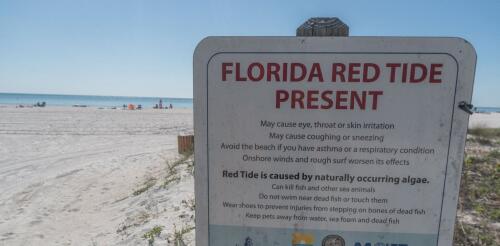Public health
Arsenic is a naturally occurring element found in the Earth’s crust. Exposure to arsenic, often through contaminated food and water, is associated with various negative health effects, including cancer. Arsenic exposure is a global public health issue. A 2020 study estimated that up to 200 million people wordwide are exposed to arsenic-contaminated drinking water at levels above the legal limit of 10 parts per billion set by the U.S. Environmental Protection Agency and World Health Organization. More than 70 countries are affected, including the United States, Spain, Mexico, Japan, India, China, Canada, Chile, Bangladesh, Bolivia and Argentina. Since many countries are still affected by high levels of arsenic, we believe arsenic exposure is a global public health issue that requires urgent action. We study how exposure to toxic metals like arsenic can lead to cancer through the formation of cancer stem cells. Arsenic water contamination predomi...
Plunging into the ocean or a lake is one of the great joys of summer. But arriving at the beach to find water that’s green, red or brown, and possibly foul-smelling, can instantly spoil the party. As a toxicologist, I study health risks from both synthetic and natural substances. I’ve conducted research into early detection of harmful algal blooms, or HABs, which are an increasing threat to humans, animals and the environment. Toxins produced during these blooms have been implicated in human and animal illnesses in at least 43 states. Scientists have estimated that in the U.S. alone, freshwater HABs cause more than US$4.6 billion in damage yearly. Here’s what to know about them if you’re bound for the water’s edge this summer. Harmful algal blooms have become a regular occurrence along large stretches of Florida’s coast in recent years. Tiny organisms, big impacts Algae and cyanobacteria – often...
From rural Pennsylvania to Los Angeles, more than 17 million Americans live within a mile of at least one oil or gas well. Since 2014, most new oil and gas wells have been fracked. Fracking, short for hydraulic fracturing, is a process in which workers inject fluids underground under high pressure. The fluids fracture coal beds and shale rock, allowing the gas and oil trapped within the rock to rise to the surface. Advances in fracking launched a huge expansion of U.S. oil and gas production starting in the early 2000s but also triggered intense debate over its health and environmental impacts. Fracking fluids are up to 97% water, but they also contain a host of chemicals that perform functions such as dissolving minerals and killing bacteria. The U.S. Environmental Protection Agency classifies a number of these chemicals as toxic or potentially toxic. The Safe Drinking Water Act, enacted in 1974, regulates underground injection of chemicals that can threaten drinking water...
Your child could go to gym class on Monday morning and play soccer on a field that was sprayed over the weekend with 2,4-D, a toxic weedkiller that has been investigated as possibly causing cancer. Alternatively, the school grounds may have been treated with a lower-toxicity weedkiller. Or maybe the grounds were managed with safe, nontoxic products and techniques. Which of these scenarios applies depends in large part on your state’s laws and regulations today – more so than federal regulations. For example, Texas requires all school districts to adopt an integrated pest management program for school buildings; IPM prioritizes nonchemical pest control methods and includes some protections regarding spraying of grounds. Massachusetts also restricts pesticide use on school grounds. Illinois requires IPM for school buildings only if economically feasible. States also vary greatly in the education and technical assistance they provide to implement these practices....
An outbreak of H5N1 avian influenza that started in 2021 has become the largest bird flu outbreak in history, both in the U.S. and worldwide. In the U.S. the virus has led to the destruction of millions of commercially raised chickens, turkeys, ducks and geese, and has killed thousands of wild birds. Many virologists are concerned that this virus could spill over to humans and cause a new human pandemic. University of Colorado Boulder virologists Sara Sawyer, Emma Worden-Sapper and Sharon Wu summarize the compelling story of H5N1 and why scientists are closely watching the outbreak. 1. Is this virus a serious threat to humans? H5N1 is a specific type of influenza virus, predominantly harbored by birds, that was first detected on a goose farm in China in 1996. Recently it has begun infecting an exploding diversity of bird and mammalian species around the globe. The virus is highly pathogenic to birds, meaning that infections often cause extreme symptoms, including death. But...



